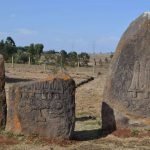Abijatta Shalla is located in the the Great Rift Valley, 200km (124 miles) south of Addis Ababa. The Lake Langano recreational areas are very popular with visitors. The Abijatta Shalla park was created primarily for its aquatic bird life, particularly those that feed and breed on the two lakes Abijatta and Shalla. The park is always worth a visit for the abundant bird life.
The park ranges from 1,540-2,075 m above sea level, the highest point being Mount Fike.
Both the Abijatta and Shalla lakes are saline and hot springs bubble up by the shore. The springs are revered locally for their medicinal properties, the hot springs have a sense of primaeval mystery about them, especially in the cooler early mornings.
Abijatta is shallow at about 14 metres and is calculated to hold a greater volume of water than all of the Ethiopian Rift valley lakes put together. Abijatta is surrounded by gentle, grasscovered slopes and swathed in acacia woodlands.
Shalla exudes a sense of mystery and foreboding, surrounded as it is by steep, black cliffs and peaks that reflect in its deep waters, which are liable to be whipped up by sudden storms and flurries of wind. It contains nine small islands, rarely visited since there are no boats on the lake. These islands provide an excellent breeding ground for many bird species.
From here you can see other parts of Lake Abijatta and some mammal species, especially Grant’s gazelle, warthog and occasionally the Oribi.
Birds to look for
Abijatta itself is very alkaline but shallow, so flamingoes can be seen scattered over most of its surface, and especially along the windward edge where their algal food source concentrates. You can approach quite closely, but beware of treacherous deep mud if the lake is low. Large numbers of both greater and lesser flamingoes gather here, together with great white pelicans and a host of other water birds. The great white pelican colony is estimated to be visited by up to 13000 pairs annually, and is said to be the most important breeding site for the species in the world.
Social Share
Contact information
Yumo Tours
P.O. Box 5698
Addis Ababa, Ethiopia
++251 11 5518878
++251 11 5513783
++251 11 5513451
info@yumo.net



